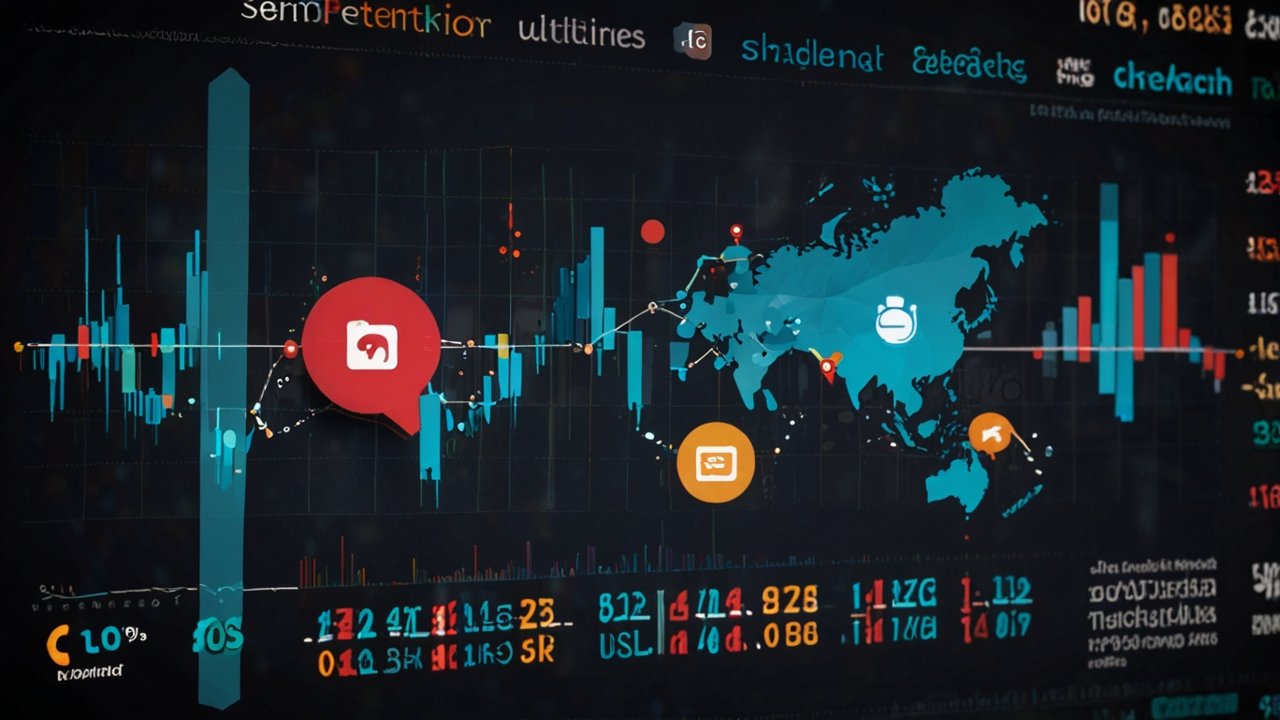Social Media ROI: 5 Measurement Strategies
In today’s ever-evolving digital world, tracking and measuring the effectiveness of online campaigns is essential. Smart marketing professionals know that proper evaluation helps ensure that investments are paying off. This article dives deep into the measurement strategies used for assessing online campaign success.
Over the years, campaigns have shifted from simple indicators of popularity to real performance data. Marketers now use detailed analytics to determine how activities translate into meaningful business outcomes. You will discover how advanced systems and methodologies play a critical role.
We will explore each stage of measurement methods, from early days of using basic data to the modern era comprised of cutting‐edge analytics. Prepare to explore the evolution, detailed case studies and future trends in online campaign measurement. Have you experienced measurable outcomes in your own digital efforts?
Understanding the Basics
When assessing the effectiveness of online campaigns, it is crucial to understand the basics. Measurement begins with tracking user behavior. Simple data points such as clicks, views, and initial interactions provided early insights. Over time, tracking methods evolved into fully developed systems that map the user journey from initial engagement to final conversion. Analyzing these touchpoints not only aids in validating investments but also highlights possible gaps in the process.
Today, experts often compare raw numbers with unified analytical data. This provides a clearer picture of how efforts are adding value to the overall strategy. By reviewing each step and corresponding action, digital professionals can better allocate resources and plan for improved performance. Have you ever wondered which part of your strategy makes the biggest impact? For more information, check out a
detailed study on digital analysis (Sprout Social).
In this section, you can also consider practical examples that detail how early metrics transformed into sophisticated tracking systems. Understanding these foundational insights is the first step towards mastering performance evaluation. Along the way, it is important to remain agile and open to new data sources, ensuring your approach remains both relevant and effective.
Key Components Explained
To truly grasp the complexity of
digital measurement, one must evaluate all components that contribute to data accuracy. Several integrated tools have emerged that combine information from multiple channels. These methods unify data points and offer a comprehensive view of the user’s journey and the tangible value outcomes. It is a continuous interplay between qualitative insights and quantitative data.
For instance, many systems now incorporate integrated platforms that converge data from websites,
social media, email, and search engines. This consolidation ensures that every customer interaction is monitored with precision. Moreover, data from customer behavior patterns is used to refine future campaigns. A robust system not only captures basic
engagement metrics but also factors deeper aspects such as user sentiment and brand presence.
Tools and methodologies continue to adapt and provide advertisers with remarkable clarity. Have you thought about which metrics provide the most valuable information for you? Also, note that by utilizing modern analytical platforms, professionals can remain ahead of the curve. Don’t forget to explore additional insights on topics such as these via Technology News.
Evolution and History of Social Media ROI
Early Days and Initial Metrics
In the early days between 2004 and 2010, online campaigns primarily relied on surface-level indicators. Early adopters on platforms like Facebook, Twitter, and
YouTube measured success with counts of likes, shares, and comments. These “vanity metrics” were often used as a shorthand for success—though their usefulness was limited. Initial strategies did not emphasize deep performance outcomes.
During those formative years, measurement was rudimentary. Basic web
traffic analytics provided only anecdotal evidence of progress. As campaigns focused on simple engagement metrics, marketing budgets were often allocated based more on perceptions than concrete data. Understanding this formative stage is a reminder that all advancements begin with modest beginnings.
This period laid the groundwork for a more sophisticated measurement system. Can you recall when you first noticed a shift from appearance to real performance? For more details on these early stages, you may refer to insights from an
AgencyAnalytics overview that offers KPI benchmarks and historical definitions.
Transition to Data-Driven Approaches
The evolution of measurement strategies truly accelerated between 2011 and 2018. With the advent of integrated tools like
Google Analytics and Facebook Insights, the focus shifted towards establishing relationships between online actions and tangible outcomes. Marketers began to employ attribution models and UTM tracking to link engagement directly with revenue metrics.
This data-driven era marked a critical turning point, as it enabled practitioners to move beyond mere counts of interactions. Instead, the focus was on mapping user journeys and understanding how behaviors correlated with conversions. As a result, companies improved their strategic planning, optimizing each step of the customer journey.
Does this evolution match your own experience in
digital marketing? The history shows that the intersection of data and intuition formed the backbone of modern measurement systems. Exploring these shifts through articles and case studies can be especially revealing. Take a look at more trends in digital history on Popular Topics.
Attribution Models and Their Impact
By applying sophisticated attribution models, marketers can trace the full journey of user interactions. These models are designed to assign precise value to each touchpoint. With systems like Google Analytics 4 and Facebook Pixel, real-time tracking of data is possible, revealing how efforts generate significant value. This allows for the proper allocation of resources to channels that drive the best outcomes.
Attribution models serve as the bridge between superficial engagement and the more profound financial results. Layering advanced methods with traditional approaches creates a detailed view of campaign performance. This paints an accurate picture of what works well and what needs improvement. Are you using such models to fine-tune your campaigns?
For a deeper dive into these analytical techniques, you might find insights on
Whatagraph’s blog post a useful resource. Through refined attribution systems, every click and conversion becomes meaningful and measurable.
Customer Value Analysis
Understanding customer
lifetime value is critical in assessing overall campaign effectiveness. By evaluating historical purchase behaviors, repeat interactions, and retention metrics, professionals can derive the total long-term value of a customer. This approach goes beyond one-off transactions, providing a holistic view of value creation. Techniques involving CRM integrations and advanced dashboards bolster this analysis.
This method helps in making informed decisions about budgeting and strategy. It shifts the focus to building lasting relationships rather than chasing fleeting numbers. Each customer interaction is carefully analyzed to reveal trends that inform future investments. What steps are you taking to evaluate the long-term value of your customers?
For more concrete data on these techniques, refer to additional insights available Current Trends in online measurement practices. The integration of comprehensive customer value analyses continues to shape strategy in today’s complex digital ecosystems.
Marketing Analytics Systems and Their Applications
Unified Analytics Platforms
Modern digital environments call for an integrated approach to analytics. Unified platforms have rolled out packages of tools that aggregate data from diverse sources such as social media, websites, emails, and search engine optimization. This holistic gathering of data allows for a more complete understanding of how campaigns perform over time. These systems also leverage AI-driven insights that streamline reporting and forecasting.
By automating the collection and analysis of data, marketers can make real-time decisions to adjust their strategies dynamically. This process promotes efficiency and helps pinpoint underperforming areas quickly. Have you had the chance to work with any unified analytics platforms?
Exploring how these platforms work in practice can be eye-opening. For further information, you may review detailed explanations provided by
Sprinklr’s enterprise case studies, which outline the benefits of integrated systems.
Tools and Techniques
There are a variety of tools designed specifically for measuring performance in digital campaigns. Tools like Google Analytics 4, UTM tracking, and
conversion optimization systems have proven invaluable. These tools help identify direct correlations between specific marketing initiatives and measurable outcomes. With the help of third-party dashboards and native analytics, every conversion detail is captured and analyzed.
This robust toolkit enables marketers to isolate performance influencers and tweak components for better outcomes. Detailed data and real-time reporting allow for rapid adaptations to ongoing campaigns. What specific tools have you found most effective in your digital strategy?
The dynamic nature of these techniques proves that staying updated with the latest technology is essential. To discover more about how these tools function in practice, explore additional content available on Digital Change. Continuous learning in this field can lead to optimized campaign outcomes and improved efficiency overall.
Success Stories from Global Enterprises
Numerous enterprises have embraced integrated measurement platforms to achieve significant improvements. Case studies highlight companies that have seen dramatic percentage gains over multi-year periods. For instance, one global enterprise measured a risk-adjusted value increase over a period of three years, driven by unified optimization across digital channels. Such examples underscore the potential of the modern analytical approach.
These stories reveal that investing in advanced systems can result in remarkable outcomes. Detailed case studies showcase how fragmented data was consolidated into actionable insights, leading to impressive revenue growth. Are you ready to leverage similar initiatives in your own practice?
To delve deeper into these success narratives, you can refer to insights shared on
LeadDigital. Their research provides specific data points and real-world examples from multiple regions that substantiate these claims.
Regional Examples Explained
The application of modern measurement strategies is not confined to one geography. Across North America, Europe, Asia, and Australia, different regions adapt these practices according to local engagement styles and market conditions. In certain Asian markets, platforms unique to local cultures have been fine-tuned to capture more relevant data. Meanwhile, Australian and European markets have aligned with global measurement standards while tailoring strategies for local
consumer behavior.
This diversity illustrates how contextual intelligence and adaptable methodologies generate detailed
performance insights. For example, one case study indicated that a particular campaign in Japan optimized local engagement by customizing content for native applications. Have you observed similar regional variations in your work?
Comparative studies help illustrate these regional nuances. Presented below is a comparison table that summarizes key examples, inspirations, and outcomes across varied regions.
<
div class=”comparison-table-container”>
Comprehensive Comparison of Case Studies
Digital Innovations and Their Global Applications
| Example |
Inspiration |
Application/Impact |
Region |
| Global Platform |
Integrated Analytics |
327% multi-year improvement |
Global |
| Pillar Marketing |
Fragmented Data Consolidation |
$1M growth in revenue |
North America |
| Regional LINE Analytics |
Local Engagement |
Increased conversion rates |
Asia |
| Digital-First Campaign |
Real-time Data |
Above-average acquisition efficiency |
Australia |
| Cross-platform tool |
Unified Dashboard |
Efficiency in multi-channel tracking |
Europe |
Conclusion
The journey through modern measurement strategies shows that mastering digital analytics can transform campaign success. From the early use of basic engagement metrics to the data-driven, AI-enhanced systems of today, professionals continue to innovate and improve their approaches.
With a focus on precision and efficiency, current systems enable better decision-making and
continuous improvement. The collaborative adaptation between global trends and local adaptations ensures that companies remain ahead in the digital age. What new strategies will you implement after reading these insights?
Your creativity and willingness to embrace change are key to harnessing the full power of advanced measurement systems. If you have any thoughts or questions, feel free to share your experiences or
Contact us. For more information on evolving strategies, continue exploring dependable sources and trusted insights.
Also, check out Trending Topics for more updates on the latest shifts in technology and digital change.




















Leave a Reply